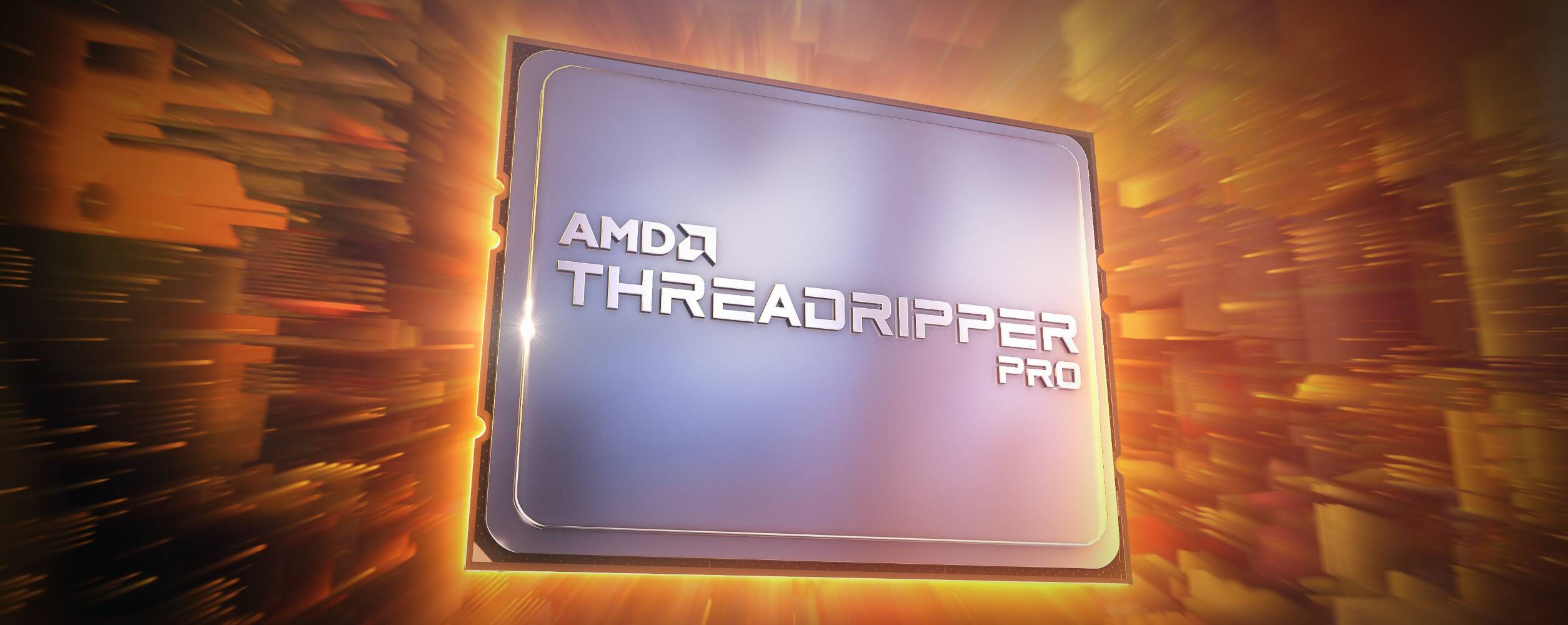AMD Surpasses Intel with New Threadripper Pro 9000 High-End Desktop Chips

RDNA 4 makes its first appearance in workstations with the 32GB R9700.
Computex AMD intends to widen its advantage over Intel in the realms of high-end desktops (HEDТ) and workstations by previewing its 9000 series Threadripper workstation processors at Computex this week.
When compared to earlier Threadripper models, the 9000 series seems like a relatively modest upgrade, primarily benefiting from advancements in manufacturing processes and the transition to AMD’s new Zen 5 architecture.
Introduced along with the 9000-series Ryzen Desktop processors during the previous summer, AMD’s Zen 5 architecture provided a 16% increase in instructions per clock compared to Zen 4. Following this release, AMD extended this architectural design to both its Epyc server line and its Threadripper workstations series.
Similar to the previous generation, AMD’s newest Threadripper models come in both Pro and non-Pro versions, featuring up to 96 cores, 128 PCIe 5.0 lanes, eight DDR5 6400 MT/s memory channels with ECC support, and turbo speeds reaching up to 5.4GHz across all configurations.
Specifically, AMD’s workstation-grade TR Pro 9000 components will come with SKUs spanning from 12 to 96 cores, whereas the regular non-Pro high-end desktop (HEDT) versions will offer a more limited range of configurations going from 24 to 64 cores.
In history, AMD’s standard Threadripper models have come with less memory channels and PCI Express lanes as opposed to their Pro versions. To illustrate this point, take the case of the TR 7000 series processors introduced in 2023; they included only four DDR5 memory channels instead of eight found in the Pro edition, along with providing merely 48 PCIe 5.0 lanes rather than having 128 available on the professional version.
We have requestedAMDforclarificationonwhetherthiswillbethecaseforTRandTRPro9000.
Below is a detailed look at the Threadripper components unveiled today:
AMD has not released retail prices for their newest batch of Threadrippers before their Computex keynote this week. Nonetheless, since Threadripper faces little competition in the high-end desktop (HEDD) segment, AMD can set prices based on what the market will tolerate.
Intel’s most recent lineup of workstation components, introduced during the previous summer, utilizes their somewhat outdated Sapphire Rapids architecture from about two years ago. These processors max out with up to 60 cores, support for 112 lanes of PCIe 5.0 technology, and provide eight channels of DDR5 memory operating at speeds of 4800 megatransfers per second.
AMD's new 9000 series of Threadripper CPUs are set to launch in July.
Alongside the introduction of its new Threadripper processors, AMD hinted at a fresh workstation GPU. This upcoming card boasts the company’s latest RDNA 4 graphics architecture and comes equipped with 32 GB of video RAM.
The Radeon AI Pro R9700 seems to draw from the chip industry’s earlier announced RX 9070 XT graphics card, incorporating identical 128 AI accelerators capable of delivering up to 96 teraFLOPs of FP16 operations and approximately 1531 TOPS of sparse INT4 performance.
As we previously covered, AMD’s RDNA 4 architecture introduces several significant enhancements for AI tasks, such as support for hardware sparsity and FP8 data types.
Note: At the time of writing, AMD had not yet shared retail pricing for the R9700.
When compared to the Intel Arc Pro B60 we examined yesterday, the 300-watt R9700 is expected to provide roughly double the performance for tasks involving dense INT8 workloads like AI inference. Additionally, you could see an increase of up to four times the performance if you opt to reduce accuracy to 4-bit precision, although this would sacrifice some level of quality.
Nevertheless, this chip does not quite measure up to Nvidia's premium workstation equipment. Nvidia’s RTX Pro 6000 workstation GPUs unveiled during their GTC event in March feature an impressive 96 GB of VRAM and can deliver as high as 4 petaFLOPS of sparse INT4 performance, which makes them roughly 2.6 times quicker compared to AMD's most recent line of professional graphics solutions.
This might be the reason why AMD chose to benchmark the R9700 against Nvidia's consumer-oriented RTX 5080, claiming it delivers as much as 496 percent better performance for executing sizable AI applications.
Although this might seem impressive, the chart is somewhat deceptive and primarily indicates that increased video RAM enables you to handle larger models without offloading data to the less speedy system memory.
It seems that what AMD has done is select models that are too big to be accommodated within the RTX 5080’s 16GB of VRAM, causing them to overflow into the computer's less speedy DRAM instead. This undoubtedly harms performance for tasks reliant on memory bandwidth, such as AI inference.
If you were to run these identical tests using a more compact model that fits within the 5080’s vRAM capacity, such as Qwen 3 14B Q4, the outcomes would likely be notably distinct. This difference arises due to the fact that although both GPUs have a 256-bit memory interface, the 5080 utilizes significantly quicker GDDR7 memory modules. Consequently, this allows the 5080 to deliver up to 960GB/s of memory bandwidth.
Although AMD has not provided memory bandwidth numbers for the R9700, we can assume it’s roughly similar to the 9070 XT's 640GB/s. Based on this assumption, we project that the 5080 would likely be around 1.5 times faster.
When dealing with AI, having rapid memory doesn’t help much unless you possess ample amounts to accommodate your model. Thus, AMD isn’t completely without justification; there are simply more accurate methods to convey this idea.
The R9700 is set to arrive on store shelves in July, coinciding with AMD's release of their Threadripper CPUs.
Belum ada Komentar untuk "AMD Surpasses Intel with New Threadripper Pro 9000 High-End Desktop Chips"
Posting Komentar